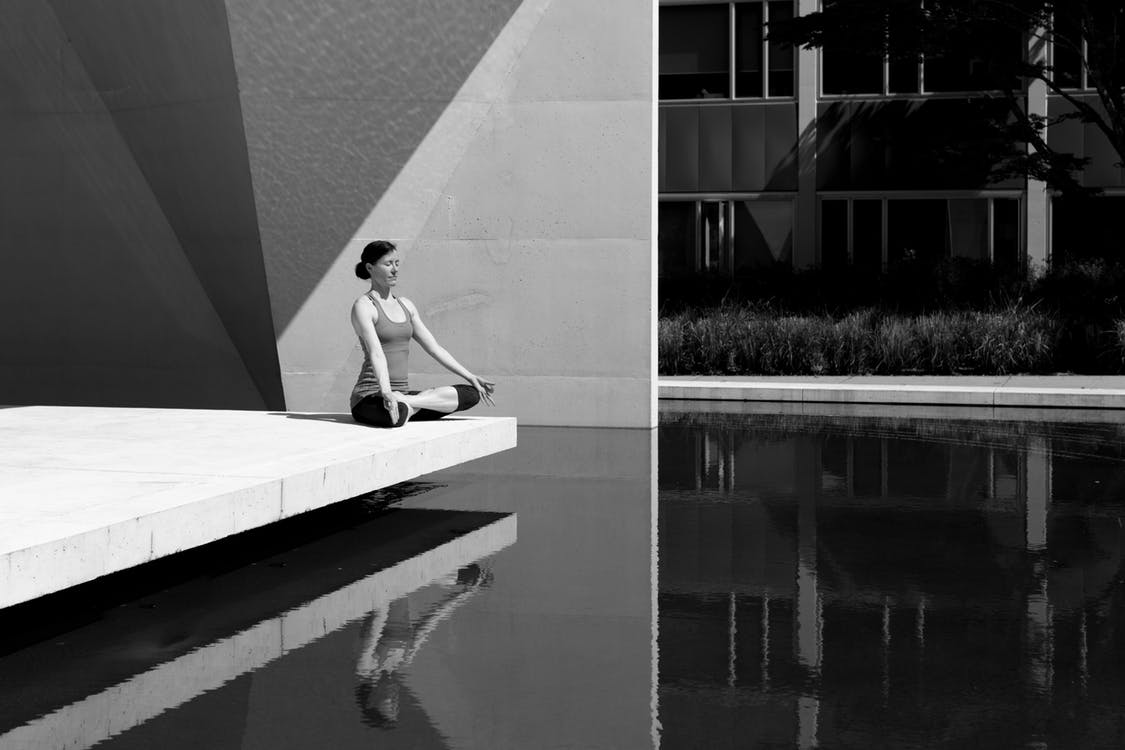I’ve been practicing yoga for many years, but I’m still a beginner in a lot of ways. I chastise myself if I’m not progressing, I often skip class because I’m tired or sad, and I’m sometimes quick to anger and judgment. In other words, I’m still learning how to be a yogi off the mat. It’s also difficult to stay grounded and centered in these modern times; I get distracted by technology and material possessions more often than I should.
Yoga isn’t really about perfection, as we hear so often in class, but I do think that there are ways to look inward and foster growth within our yoga practice. For me, that means getting on my mat every day and focusing on simplicity. If you’re looking to connect with your practice in a new way, here are some practical ideas to try.

Stick with one teacher.
There’s something to be said for exploring different teaching styles and classes, but a lot of yogis benefit from having one teacher with whom they practice. By having a go-to teacher, you’ll know what to expect every time you walk into a class; you’ll know you won’t get bored or uncomfortable. In addition, by practicing with a single teacher, he or she will also become acquainted with you and your body, your strengths and weaknesses. It’s also surprisingly nice to see the same face each day, and you’ll have the opportunity to form a lasting bond with someone whom you admire.
Practice every day.
Like any activity, the more you practice, the better you are. Likewise, the more you practice, the more you learn about yourself. If you want to go deeper in yoga, you must have a consistent practice. Don’t get me wrong: it’s really, really hard to prioritize yoga when you’re busy or stressed. I took a whole month off of yoga when I was studying for the law school entrance exam. But ultimately, yoga works best during those times when you try to avoid it the most — it’s calming and cathartic and improves sleep.
Listen to your body.
Paradoxically, you should always listen to your body, even if it tells you to rest. You won’t grow in your practice if you have a fever or migraine. You should also take a few days of rest when menstruating; whether it’s founded in science, I’m not sure, but it sure as hell feels good to sleep in when you feel bloated and achy. When I’m good about practicing, I take a rest day on Saturdays and during new and full moons.
Read the Yoga Sutras.
If you want to truly understand the foundational principles of yoga, buy a copy of the Yoga Sutras. Compiled by Patanjali, a scholar of Hindu philosophy, the Yoga Sutras contain several books that look at component parts of the yoga practice. In reading this ancient text, you’ll learn that the physical poses are only one, arguably minor, aspect of yoga. Other parts include Samadhi (non-attachment and concentration); Vibhuti Pada (progression); and Kaivalya Pada (liberation and enlightenment).
Practice patience.
I’m a very impatient person, especially when it comes to yoga. I’m also a perfectionist, which does not lend itself well to difficult postures that, by their very nature, require a lot of work to see progress. I suppose that’s why yoga is attractive to me: it challenges the parts of myself that feel immutable and uncompromising. If you’re like me, yoga is probably pretty frustrating for you, too. But if you just put in the work and commit to a daily practice, patience (and maybe even self-compassion) will enter your life in unexpected ways. Next time you fall out of a balance, remember that you have many more days to improve and there’s no need to rush it.
Stop comparing.
Guilty! I compare myself to other yogis all the time. It’s fine to look at Instagram and YouTube for inspiration and motivation, but when you find yourself feeling jealous or upset, you should take a step back. Think of it this way: how do you expect to deepen your practice if you’re constantly focused on someone else’s journey? Next time you find yourself in the yoga comparison trap, remember that you won’t be able to grow so long as you’re worried about what other people are doing.
Don’t focus on advanced postures.
Handstands and backbends are fun to look at, but they’re really just circus tricks. I’m totally guilty of posting pictures of myself in ridiculous binds on Instagram, but the truth is, the simplest postures are the most effective. Simple sun salutations are great — no need for legs behind your head. On some days, when I’m just not feeling like doing an hour and a half of yoga, I’ll just do a few sun salutations and call it a day. There’s so much to explore in the simplest of postures, so don’t put pressure on yourself to try advanced poses unless you want to.
Practice at the same time each day.
As much as I love sleeping in, I wake up at the same time almost every day to take a bus to my yoga studio before work. You don’t have to practice in the mornings, though: you can practice at lunch or after work, too. What matters is that you do it at the same time every day, as this will help you to develop a regular practice. Plus, it’s just nice to do something purely for yourself each day, something to value and cherish.
What has helped you deepen your yoga practice?
Also by Molly: 4 Revitalizing Ways To Turn Your Yoga Practice Into A Wellness Lifestyle
Related: Yin Yoga Sequence For Balance & Happiness That You Need In Your Crazy Busy Life
10 Yoga Quotes To Inspire You On And Off The Mat
Get more like this—Subscribe to our daily inspirational newsletter for exclusive content!
__
Photo: Pexels
